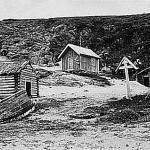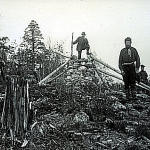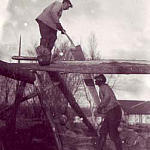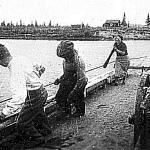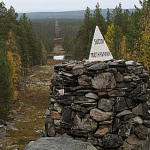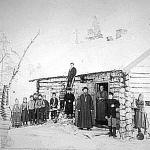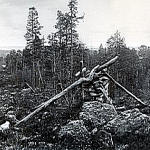

Home
Area
Vätsäri
Övre Pasvik
Pasvik Zapovednik
Nature
Geology
Climate
Water system
Flora
Fauna
Culture
Population
Religion
Sources of livelihood
Old ways of life
Time of industrialism
History
Stone Age
Early Metal Age
Late Metal Age
Middle Ages
Towards modern times
Timeline
Cooperation
Nature monitoring
Nature tourism
Publications
Contacts
Visit Pasvik-Inari
Guidelines
Regulations
News
Links
Towards modern times
Peace treaties and setting of boundaries
In the Täyssinä peace treaty of 1595, the border line dividing the empires of Sweden-Finland and Russia was agreed. In the north, it passed across Lake Inarijärvi, and from there along the border of Neiden and Varanger Lapp villages up to the Arctic Sea. In this manner, the Inari siida was divided in two parts: the eastern Russian Inari and the western Swedish Inari, and the empire of Sweden-Finland lost its connection with the Arctic Sea.
In the Strömstad peace treaty of 1754, Norway extended its area east as far as the border of Neiden village and the Näätämö, Paatsjoki and Petsamo siidas stayed as a common land of Denmark-Norway and Russia. As compensation for splitting the Sámi land in the additional protocol of the peace treaty "Lappecodicill", it was noted that Sámi had the right to cross borders during their herding, trading, hunting and fishing trips.
Finland was incorporated as a part of Russia via the Hamina peace treaty of 1809. In 1814, Norway separated from Denmark and entered into union with Sweden. Also, Norway got its own constitution. In 1826, the last common land was divided, and the Näätämö Skolt Sámi siida's coastland was given to Norway and the rest was added to Finland. The Paatsjoki siida was split along the Pasvik River between Norway and Russia, and Russia had the whole Petsamo Skolt Sámi siida. This border line between Norway and Russia exists even today.
In the 19th century, the Sámis' right to cross the borders affected conflicts in all countries. The Norwegian-Finnish border was closed for the movement of reindeer in 1852. Also, Russia and Norway tried to negotiate about borders, but, in the end, Russia closed all borders opposed to Norway in 1852. Actually closing the border was mutual; Norway denied fishing for foreigners in the Arctic Sea in 1854. Despite that ban on fishing, Finnish and Sámi people made fishing trips to the sea coast through the Petsamo area during the 1850s-1860s.
New nations and changes in administration
The union with Sweden and Norway was peacefully dissolved in 1905 and Sweden recognised the independence of Norway. The Norwegian parliament offered the throne to Prince Carl of Denmark, who confirmed the monarchy of Norway and ascended the throne under the Norwegian name of Haakon VII.
In 1917, Finland became an independent state. The Finnish Civil War was fought in Finland from January 27 to May 15, 1918, between the Social Democrats led by the People's Deputation of Finland, called the "Reds", and the non-socialist, conservative-led Senate, called the "Whites". The Whites won the Civil War, and as result of this, Finland passed from Russian rule to the German sphere of influence. The Senate attempted to establish a Finnish monarchy ruled by a German king, but after the defeat of Germany in World War I, Finland emerged as an independent, democratic republic.
In 1917 in Russia the October Revolution (also known as the Bolshevik Revolution) overthrew the tsarist autocracy and resulted finally in the establishment of Soviet power under the control of the Bolshevik party. As a result, the Soviet Union was established in 1922. In 1991, the Soviet Union dissolved and Russia became an independent republic.
